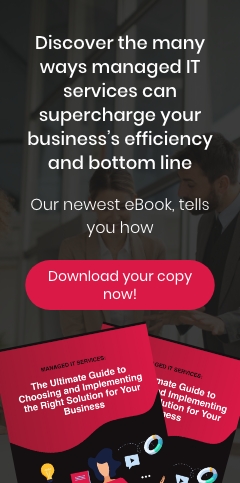What Should You Have in Your Business Continuity Plan?
In the event of a disaster, does your organization have a comprehensive business continuity plan in place? If not, it’s time to get one. Here’s how to do it.
According to the Verizon Data Breach Investigations Report of 2019, “every type of organization is at risk” when it comes to data breaches and network hacking. Furthermore, the report states that “no matter what defensive measures security professionals put in place, attackers can circumvent them. No organization is too large or too small to fall victim to a data breach. No industry vertical is immune to attack.”
While this information may sound bleak, there is a light at the end of the tunnel. That’s because, even though you may not be able to prevent a disaster such as a data breach completely, you can still take steps to ensure a quick recovery and the prevention of additional damage.
Of course, to do this, such a plan cannot be created after the fact. You absolutely must instead plan by creating what’s called a business continuity plan.
What Is a Business Continuity Plan?
A business continuity plan is a plan that outlines essential steps your business must take as soon as you become aware of a disaster such as a data breach, network hack, natural disaster (hurricane, tornado, fire, etc.), or other such events. Your plan should include operation steps that help your business experience as little downtime as possible.
It’s important to distinguish between a business continuity plan and a disaster recovery plan. While a disaster recovery plan helps you prevent a security breach in the first place, a business continuity plan enables you to bounce back from a security breach or other disaster with as little harm done as possible.
What Should Your Business Continuity Plan Include?
1. A list of possible threats.
First, it’s essential to know what you’re up against. Make a list of the top threats your business may experience so that you can plan for each one in turn. For example, if you live in an area where there is a lot of flooding, this should be on your list — as should other common disasters such as security breaches, network hacks, physical break-ins, etc.
2. A list of emergency contacts.
Right away, it’s essential to contact the necessary entities. For example, the police or fire department should be contacted in the event of an immediate threat of violence, fire, etc.
In quick succession, other connection should be made as well. In most disasters, your technology will be compromised. Therefore, contacting your IT company and service providers should be one of the first things you do as well.
Finally, further down the list, make sure you contact employees, clients and customers, investors, and others who may be impacted by the event.
3. A way to access backup data.
Part of setting up your continuity plan with your IT company is ensuring a backup of your data. This should be securely accessed as soon as you detect a problem that might affect daily operations.
4. Alternative power and communication sources.
Depending on the event that caused the disaster, make sure you’ve included a way to access alternative power and alternative communications in your plan. You may even need an alternative location to conduct business.
Does Your New Jersey Organization Have a Business Continuity Plan?
No matter what the industry, all businesses possess sensitive information. Whether it’s your employees’ personal and financial payroll information or medical information from patients, this data would cause a calamity if corrupted. Some businesses even go under because they suffer a disaster they can’ recover from.
Don’t let this happen to your New Jersey business.
Let Two River Technology Group create a business continuity plan that will prevent your company from cracking under the weight of an IT disaster. Contact us today at (732) 391-4770 to schedule an assessment.


